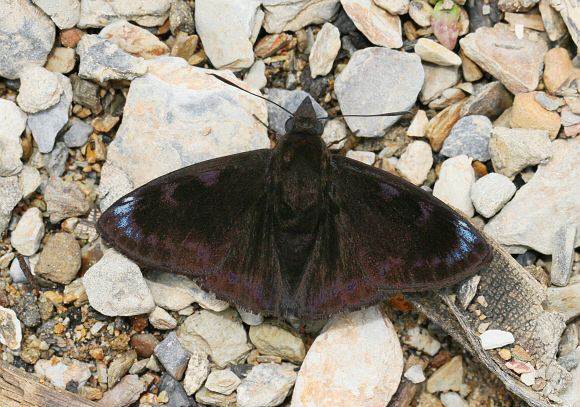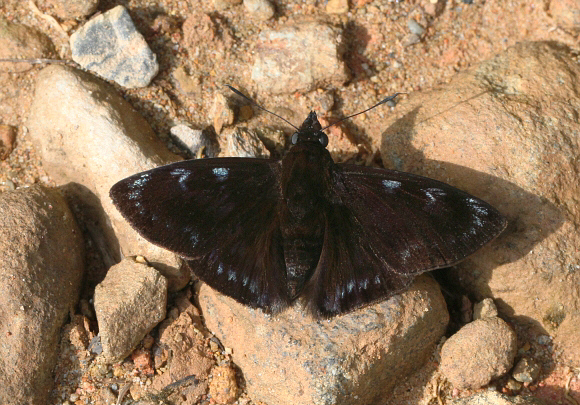
Introduction
The Pyrginae, popularly known as Flats or Spreadwings, are a cosmopolitan subfamily distributed across temperate and tropical habitats throughout the world. In the Americas there are 990 species.
The tribe Carcharodini includes 26 genera that occur in the neotropics, amongst which are Bolla, Staphylus, Pellicia, Nisoniades, Gorgopas, Myrinia, Noctuana, Polyctor and Mictris.
The genus Mictris comprises of a single species crispus which is easily recognised from the blue apical markings and from the labial palpi which are held together to form a conical ‘snout’.
Mictris crispus is distributed from Mexico to Ecuador.
Habitats
This species is found in cloudforest at elevations between about 400-1800m.
Lifecycle
The larva in the early instars is translucent yellowish-green, with a red tinge at either end. When it is fully grown it is red with dorsal and lateral rows of white spots, and has a large head, striped with black and reddish-brown. It lives solitarily in a leaf-shelter constructed by cutting and folding over a circular section from a leaf of the foodplant. In Central America it feeds on Uncaria ( Rubiaceae ) and Hieronyma ( Phyllanthaceae ) but I have no details of plants used in South America.
Adult behaviour
Males are almost always seen as singletons, usually when imbibing mineralised moisture from river beaches, muddy tracks or around the edges of lagoons.

